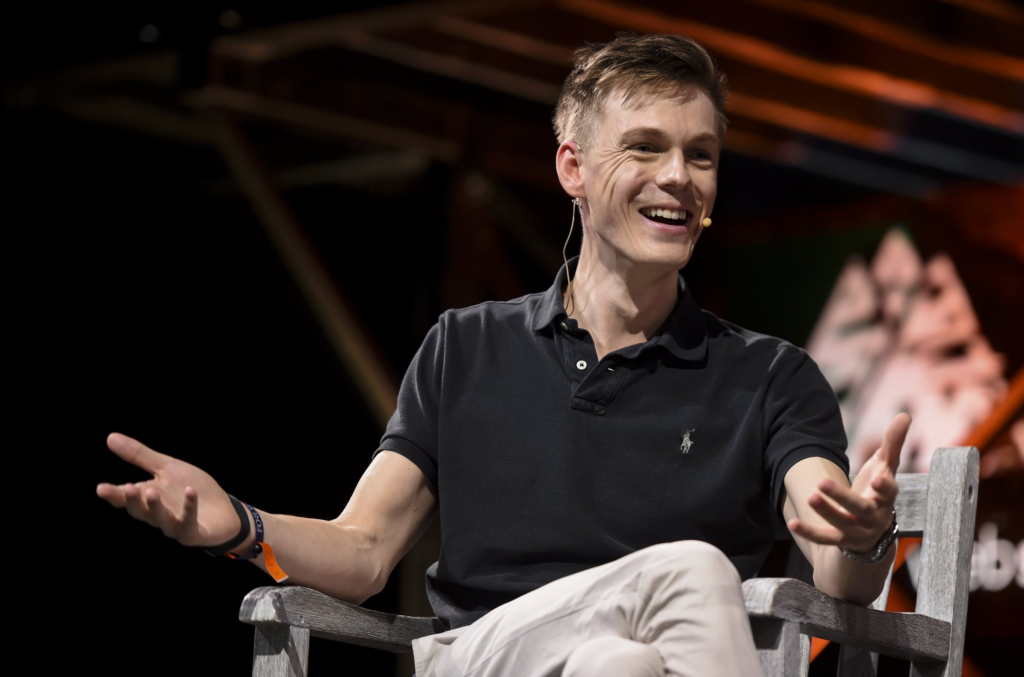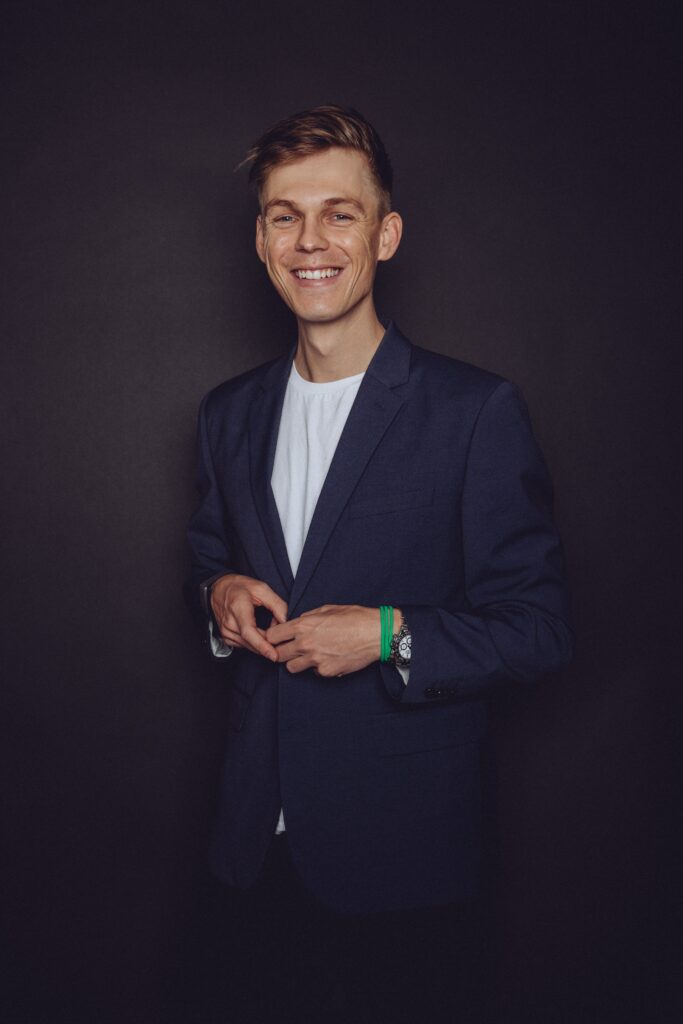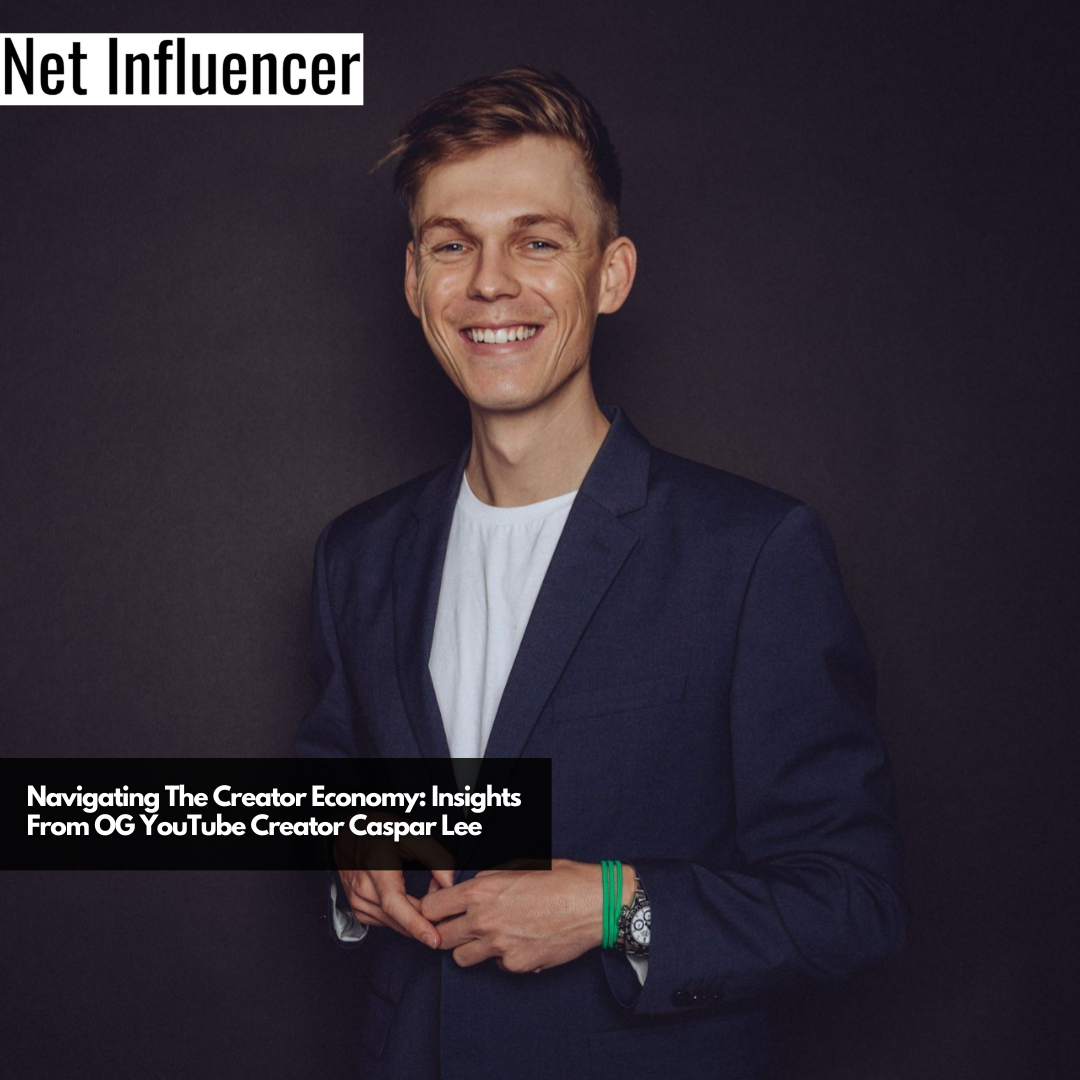Influencer
Insights From OG YouTube Creator Caspar Lee: Navigating The Creator Economy
Caspar Lee’s YouTube journey began in South Africa at 16, sparked by icons like Ray William Johnson. Despite initial challenges, he persisted due to his passion for content creation.
Collaborations with UK YouTubers, such as Zoella and Joe Sugg, catalyzed his rise. By 18, Caspar went full-time, accumulating 6 million YouTube subscribers and a strong social media presence.

“I enjoyed being a creator,” he reflects, spotlighting collaborations with the Queen’s Young Leaders and artists like Ed Sheeran. Now an entrepreneur and investor, Caspar’s creative foundation fuels his new endeavors, demonstrating an inspiring evolution from YouTube enthusiast to business leader.
You’ve been a prominent figure in the YouTube community for quite some time now. How has the creator landscape changed since you started, and what challenges have you encountered along the way?
Caspar reflects on the evolving creator landscape. “Now people see it as a career first, even before a hobby,” he notes, highlighting a shift towards professionalism. Competition has intensified, demanding serious commitment to stand out amid content saturation.
In contrast to earlier days, when demand outweighed supply, the field now attracts skilled individuals. “Brands working with creators have increased dramatically, with billions invested each year,” Caspar observes. About 50 million people identify with the creator economy.
He acknowledges the hype around creator economy startups and the diverse trajectories they’ve taken. While some thrived, others grappled with challenges. Caspar finds the success of creative businesses intriguing, indicating their viability.
In the journey to monetize content, businesses emerged to serve creators. “A lot of people were trying to figure out how to make money from the space,” he recalls. Businesses have evolved in varied ways, with successes like Canva and VK.
As an OG YouTube creator, you’ve witnessed the platform’s evolution firsthand. How do you feel about the changes YouTube has made over the years, and how have these changes impacted content creators like yourself?
Caspar has witnessed the platform’s evolution firsthand. Reflecting on these changes, he states, “Now it’s all about attention… how much attention does each video you upload get?” YouTube’s shift towards emphasizing viewer engagement rather than subscriptions has altered the landscape for content creators.
Caspar highlights the challenge of maintaining authenticity while catering to algorithmic demands, saying, “Pressure can lead to content being more generic and predictable.” While mainstream content trends towards catchy thumbnails and cliffhangers, he notes that authenticity and relatability remain crucial for building meaningful connections with viewers.
Having been actively involved in the influencer marketing industry for quite some time, you’ve witnessed its rapid growth and evolution. What changes have you found most exciting, and how do you see the industry evolving in the next few years? Are there any specific challenges or opportunities that you believe will shape the future of influencer marketing and the creator economy?
Having immersed himself in the influencer marketing industry, Caspar has observed its rapid growth and evolution. He remarks, “Influencer marketing is actually booming, and it’s continuing to boom.”
Brands’ interest in collaborating with creators is driven by the substantial returns on investment compared to other forms of advertising. The data-driven approach is becoming paramount as brands analyze the impact of influencer campaigns.

Caspar notes, “It’s super exciting” as more resources are channeled into influencer marketing, allowing creators to craft higher-quality content. This enriches viewers’ experiences with ad-funded content, particularly relevant in a landscape where subscription costs are on the rise.
Discussing the industry’s future, Caspar envisions platforms converging. He predicts YouTube, Instagram, and TikTok embracing features from each other, blurring lines, and challenging platform loyalty.
Amid this evolution, he believes these platforms, especially YouTube, Instagram, and TikTok, will emerge as the frontrunners in influencer marketing. He concludes, “It’ll be interesting to see what happens.”
In the influencer marketing world, collaborations with brands have become a significant part of many creators’ revenue streams. What are your thoughts on brand partnerships, and how do you ensure that your collaborations align with your personal brand?
Caspar shares insights into the world of brand partnerships and their connection to personal values. Collaborations with brands have become a vital income stream for creators, shaping their online presence.
Having the freedom to choose brands that align with values is essential to Caspar. He acknowledges the challenge for emerging creators who may lack such a choice. “Starting out, it’s harder to pick brands,” he shares.
Caspar’s recent collaboration with Lego stands out due to his personal connection and the ease of integrating it into his content. He tells us, “I love making Lego with my fiancée. That’s just so easy to do.”
In this landscape, authenticity remains crucial. He suggests aspiring creators to think about, “What’s the brand asking you to do within the content? Does it align with your values?” The interplay between creator authenticity and brand collaborations continues to shape influencer marketing.
As the CVO of Influencer, you have a unique insight into the influencer marketing industry. Could you share some strategies that you believe are essential for brands looking to succeed in this space?
Caspar emphasizes the rising trend of ambassadorships as a winning strategy. These collaborations involve brands and creators forming long-term partnerships, often spanning a year. Caspar explains, “Brands like exclusivity within a vertical… having creators speak about your brand for years is very valuable.”
Ambassadorships offer stability for creators who can avoid constantly seeking new partnerships. This enables them to invest more effort into optimizing content quality. Additionally, the cost-effectiveness of bulk content purchases benefits both parties.
According to Caspar, ambassadorships resonate with audiences, showcasing creators closely aligned with brands. This dynamic strengthens brand-creator relationships and fosters authenticity. It’s not about making creators the face of brands but about establishing lasting value-driven collaborations.
What advice would you give to creators just starting in the creator economy space, trying to find their niche and build their audience?
In the ever-evolving realm of the creator economy, Caspar offers invaluable advice to those setting out on their creative journey:
- Sensible Progression: Caspar emphasizes a cautious approach to full-time creator status. “Be careful when you try and do it full-time,” he warns, suggesting a gradual shift to nurture your passion without succumbing to undue pressure.
- Patient Persistence: Reflecting on his start as a part-time creator, Caspar underscores the value of patience. “I was lucky. I started being a creator part-time so I didn’t have that pressure,” he shares, highlighting the importance of persistence over immediate success.
- Skill Evolution: Caspar notes the evolving demands of content creation. “You can’t create terribly edited videos and expect to succeed,” he observes, stressing the need for continuous skill development over time.
- TikTok Terrain: Caspar acknowledges TikTok’s rapid rise for creators. “Start on TikTok… Anyone can rise quickly,” he advises. However, he cautions against expecting sustained success without considering long-term audience engagement.
- Sustainable Value: The allure of quick fame has a flip side. “What goes up quickly can come down quickly,” Caspar warns. He urges creators to focus on building lasting value that extends beyond viral moments.
- Enduring Dedication: Caspar’s parting words echo the creator’s grind: “The grind is real; people never stop working.” The journey requires unrelenting commitment, ongoing learning, and embracing the joy of creating.
Building a loyal community of followers is crucial for long-term success as an influencer. How do you engage with your audience, and what steps do you take to maintain a strong connection with them?
Caspar distinguishes between viral entertainment followers and truly engaged fans. He explains, “There’s a difference between a viral entertainment audience and a creator who genuinely engages with their audience.” Building a loyal community goes beyond surface-level appeal; it involves creating content that deeply resonates and forms lasting connections.
To establish a meaningful bond, Caspar stresses the importance of offering value beyond entertainment. He highlights platforms like Patreon and subscriptions, allowing creators to provide exclusive content. As he puts it, “It’s about offering something more—knowledge, unique viewpoints, or exceptional talents.” This approach cultivates a more direct and profound connection with followers.
Caspar outlines two paths to success. The first focuses on being a consistent, captivating character, entertaining the audience. He emphasizes, “Be a character, stay consistent, and work hard.” The second path centers on delivering distinct value, such as knowledge or unique perspectives. Both require dedication to cultivate a loyal following.
Despite industry competition, Caspar advises creators to carve a niche and stand out. He acknowledges the challenges posed by established companies and studios, saying, “You’re competing with the world.” By recognizing their strengths and tailoring strategies to their unique audience, creators can maximize their impact.
The creator economy has enabled content creators to monetize their work in different ways. What are some alternative revenue streams that you find particularly interesting or successful in today’s landscape?
Beyond the well-known brand deals and paywalled content, Caspar explores an array of avenues. He mentions the rise of subscription platforms like Patreon and OnlyFans, offering exclusive content. He notes, “Merchandise is popular, and creators are even venturing into launching separate brands and businesses.”
Intriguingly, creators like MrBeast have ventured into launching consumer and B2B companies. Caspar himself co-founded Influencer.com, reflecting a broader trend of creators venturing into entrepreneurship. Moreover, some creators are delving into long-term revenue by investing in companies they discuss, contributing to their growth over time.
Caspar discusses the concept of selling ad inventory upfront, generating revenue for years to come. He highlights, “Some creators secure upfront cash by selling ads on their channel for the next several years.” These evolving methods signal a shift towards more strategic revenue generation.
The podcasting and publishing realms have also emerged as attractive domains. Caspar recalls how his involvement in book deals was novel at the time, highlighting the expansion into adjacent markets. Additionally, while intellectual property (IP) monetization was anticipated, Caspar indicates it’s less widespread than assumed.
There’s an ongoing discussion in the influencer marketing industry about the effectiveness of micro-influencers versus macro-influencers. What are your thoughts on this debate? From your experience, what unique advantages do micro-influencers bring to brand collaborations, and in what scenarios do you believe macro-influencers are better suited for partnerships?
Caspar offers a succinct take on the micro vs. macro influencer debate. He likens micro-influencers to relatable friends who drive targeted engagement, while macro-influencers resemble popular figures that create a broad brand impact.
Caspar suggests that the choice between the two depends on a brand’s goals and target audience. “It’s a combination,” he notes, underscoring the need for tailored strategies that align with diverse brand objectives.
Alongside the growth of the creator economy, new social media platforms and content formats have emerged. How do you decide which platforms to focus on, and do you tailor your content for each one?
Caspar offers unique insights into his approach to social media platforms. He acknowledges the distinct roles of different platforms in his strategy: “TikTok is a great growth engine for getting your face out there,” while “YouTube is an incredible place to build hour-long conversations with your audience.” Meanwhile, Instagram serves as a space where connections are formed on a more superficial basis.
However, Caspar also recognizes the changing dynamics of platforms. He tells us, “They’re all doing the same things within their own platforms.” This shift emphasizes adapting strategies within each platform’s features, such as stories, shorts, and long-form content. His perspective underlines the need for nuanced approaches to optimize engagement across diverse platforms in today’s rapidly evolving digital landscape.
With the creator economy continually evolving, what are your predictions for the remainder of this year? Are there any emerging trends that creators should keep an eye on?
According to Caspar Lee, the creator economy’s future involves “more of what we’ve already seen,” with growth, bigger partnerships, and no signs of slowing down. While specific predictions are challenging given the rapid evolution, he points out that brands will expand collaborations with creators beyond social media, involving them in “the wider conversation.”
Caspar emphasizes the ongoing expansion within the creator economy while acknowledging the challenge of predicting the next big thing. He notes, “It’s always interesting to think about what’s gonna be next.”
Finally, what’s next for Caspar Lee? Do you have any exciting projects or ventures in the works that you’d like to share with our readers?
Caspar’s journey ahead involves multifaceted growth. His business Influencer.com remains a key focus, aligning with his expertise in the creator economy.
Notably, he has also co-founded Creative Ventures, a fund that fuels startups with investments. With plans to invest in around 50 startups in three years, Caspar expresses enthusiasm for supporting founders and their innovative ideas.
Additionally, he’s looking forward to the return to normalcy in the coming years, envisioning a brighter economic landscape. As he puts it, “Excited to see the economies and everything get back to normal in the next few years. That would be really good. That would be great.”





















